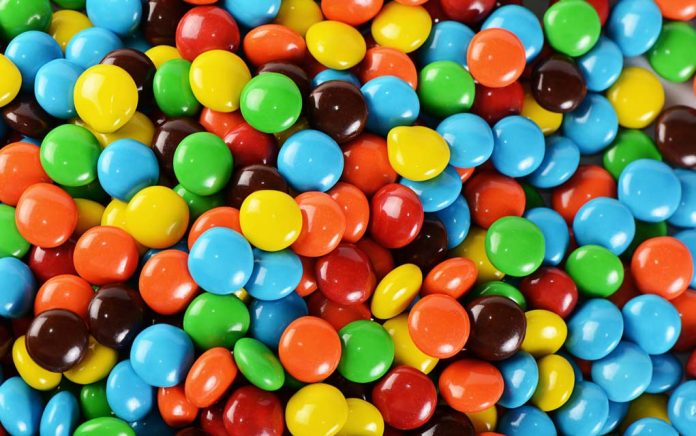
Artificial colors are prevalent in our daily life. They are in our lipstick, toothpaste, nail polish, hair dyes and tanning spray, and they’re also added to medications and nutritional supplements to help us differentiate between the various pills in our pill organizer. And they create the colors in our clothing, bath towels, bed linens, shoes, carpets – their application is immeasurable.
From soda to salmon, the food industry adds more than 15 million pounds of artificial food dyes into our food supply each year. Artificial dyes are added to so many foods, we hardly think twice about how Froot Loops get their bright colors or what makes cola brown. Dyes can be found in thousands of foods, including breakfast cereal, candy, and chewing gum.
Americans are eating more artificial colors than ever. The amount has increased from 12 mg a day in the 1950s to 68 mg a day in 2012. That’s a 5-fold increase1 but it shouldn’t come as a surprise, not when a meal of Kraft Dinner, Orange Crush and a bag of Skittles delivers 102 mg of artificial dyes2. Alarmingly, many people are unaware of the potential dangers associated with them.
In the United States, all food and drink labels must list the artificial colors they contain. To denote synthetic food coloring agents (or artificial dyes), they are assigned FD&C (Federal Food, Drug and Cosmetic) and regulated by the FDA.
Seven artificial colors are approved for use in food in the U.S.:
|
|
Additionally, Orange B is allowed specifically to dye hot dog and sausage casings and Citrus Red 2 is used only to color orange peels.
In Canada, artificial colors can collectively be declared as “colour” or “colours”. If they are specifically named, they are declared by their common name, for example, ‘Tartrazine’.
Artificial colors contain various chemicals and are commonly derived from petroleum products. Although they have been linked to many health concerns, including allergic reactions, behavioral changes, and even cancer, the U.S. Food and Drug Administration continues to allow them to be used in food
Reported reactions to artificial dyes include:
|
|
|
Artificial food colors have been linked to attention problems, including attention deficit disorder (ADD), and attention deficit/hyperactivity disorder (ADHD). Two British studies showing that artificial colors increase hyperactivity and decrease attention span in children, both with and without learning disabilities, resulted in the enforcement of labeling of products containing artificial colors across Europe. Several European food manufacturers have since removed or replaced the artificial colors from their products3. Even American food manufacturers use natural colors in products exported to Europe – yet they continue to use artificial colors in the U.S.
Read more about artificial colors and health concerns
One of the most problematic dyes is tartrazine, FD&C Yellow #5. Tartrazine imparts a yellow or orange color to salty snacks, cereals, packaged soups, pickles, cake mixes and more. It’s also used to color beverages, including energy drinks, juices and sodas. An 8oz (250ml) serving of soda could contain from 0.8 to 8.0mg of tartrazine.
The dye is also used for drugs and cosmetics, mainly for identification purposes. You might find tartrazine listed on labels of antihistamines, antibiotics, antidepressants, oral contraceptives, sedatives and even nutritional supplements! Liquid soaps and lotions colored yellow or orange are likely to contain tartrazine too.
The coal tar dye has been linked to cancer and is known to provoke asthma attacks, skin reactions, and hyperactivity in children. Tartrazine has already been banned in Norway, Austria and Finland. Because of these risks to health, in both the U.S. and Canada, tartrazine must be included and specifically named in the ingredients list of any food or product that contains it.
Food manufacturers have the option of replacing synthetic dyes with natural ones. The use of naturally derived colors has almost doubled over the past decade thanks to pressure from major chains like Whole Foods and consumer advocacy groups. Currently, natural dyes have replaced artificial dyes in nearly 40 percent of foods and beverages sold in the U.S.4
Natural dyes are derived from natural sources and are without doubt the healthier choice. Nature’s Flavors, for example, makes organic food colors from all natural and organic plant extracts which have been shown to be high in bioflavonoids, polyphenols, and antioxidants.
The most commonly used natural dyes are:
- Annatto – a reddish-orange dye made from a South American shrub
- Beta-carotene
- Betanin – an extract from beets
- Carmine, derived from the cochineal insect Paprika
- Lycopene from tomatoes
- Saffron
- Spirulina (from algae) – for gum and candy only.
For the most part, they are an excellent and safer alternative to artificial dyes, however, they are much more expensive (as high as 10 times higher than artificial dyes) and less stable when subjected to heat and light.
Also, they are not as vibrant as artificial dyes, causing concern among food manufacturers who have trained their customersto expect brightly colored foods and beverages. Another issue is that some natural food dyes are linked with serious allergic reactions, as well as other health concerns. Three ‘natural’ dyes that have been linked to allergic reactions are carmine, annatto, and caramel.
Read more: 3 Not-So-Natural Food Dyes to Avoid
Since labels indicate which artificial colors – both artificial and natural – are included in the ingredients, carefully read the ingredients list on every product you buy.
Remember, food dyes are hiding where you may not expect them. If a discernible reaction occurs with a food or drink containing a food dye, record the color or combination of colors and watch for that reaction again. While most people react to one specific color (Red No. 40 is a culprit well known among parents) some people react to a combination of dyes.
References:
1. www.ncbi.nlm.nih.gov/pubmed/24037921
2. www.cbc.ca/news/health/food-dye-amounts-revealed-in-brand-name-products-1.2642839
3. www.cspinet.org/new/200806022.html




